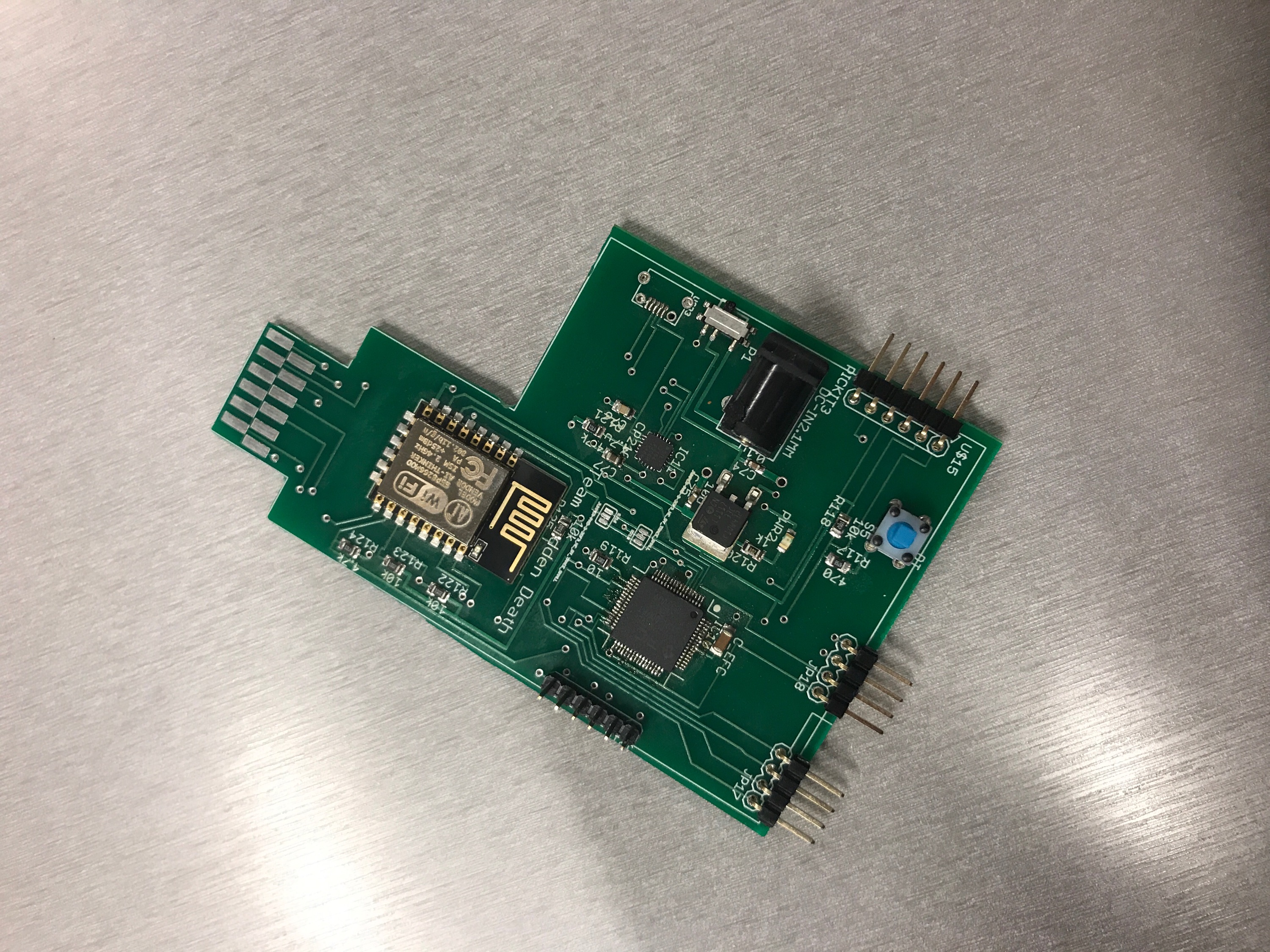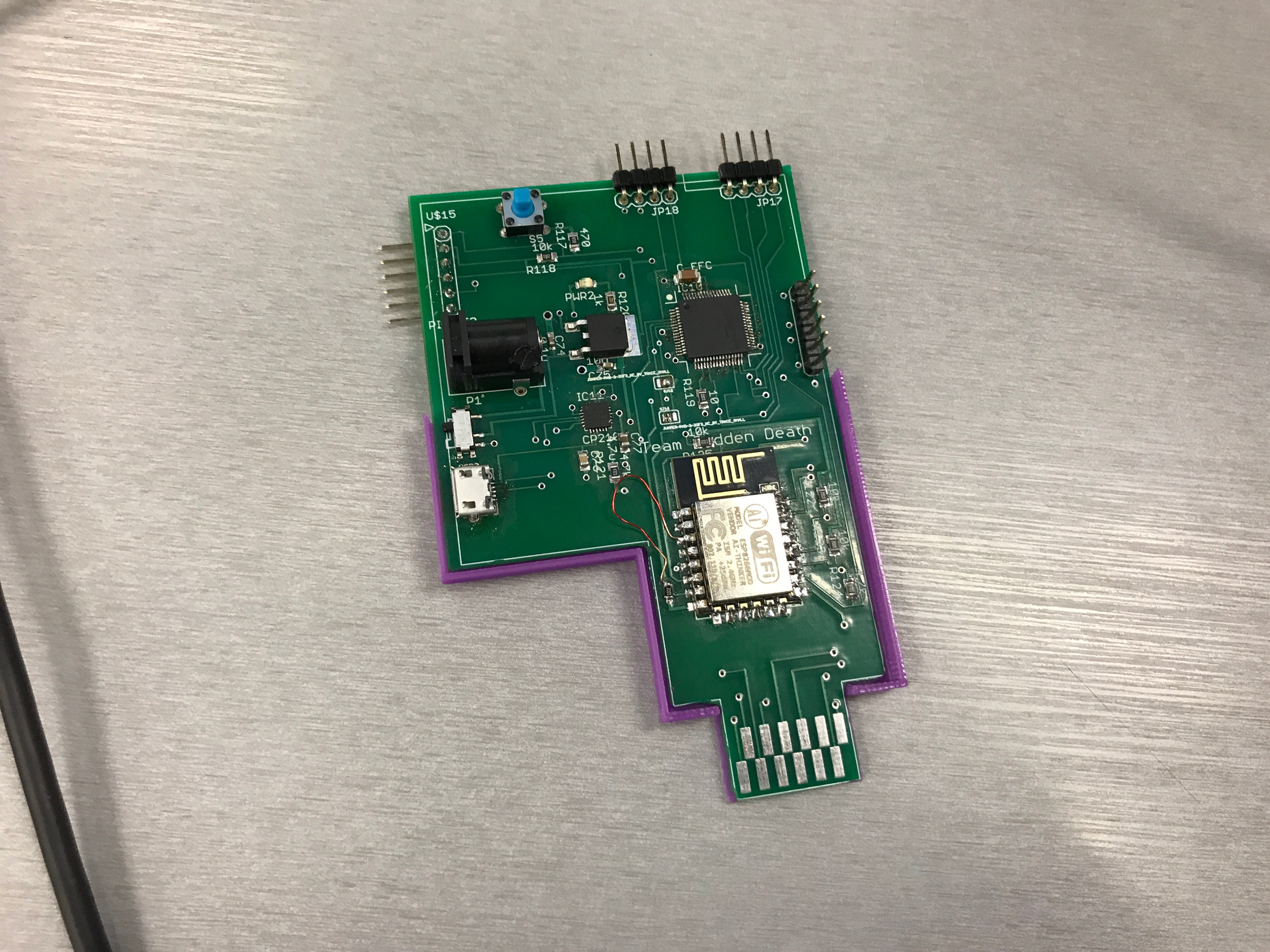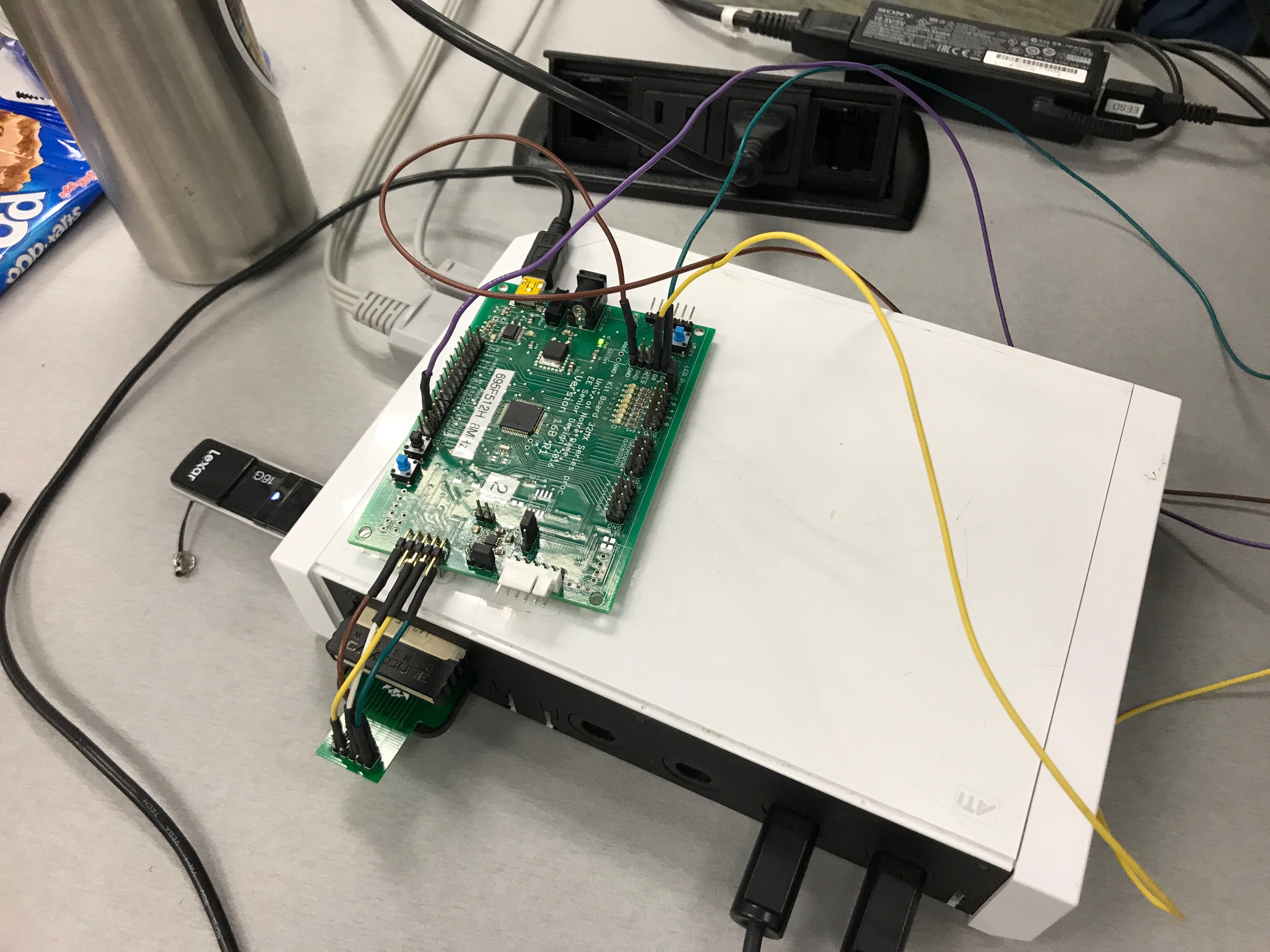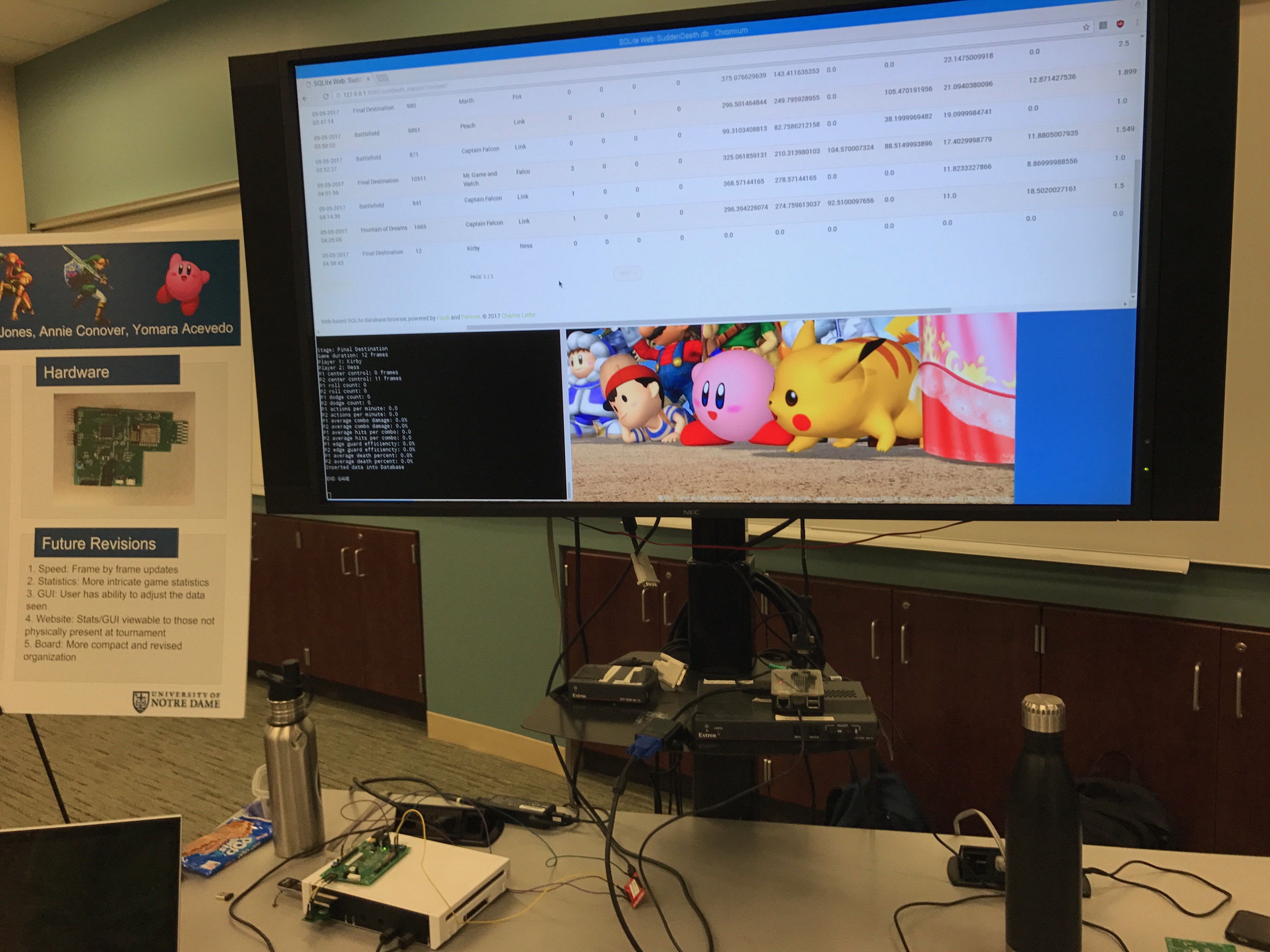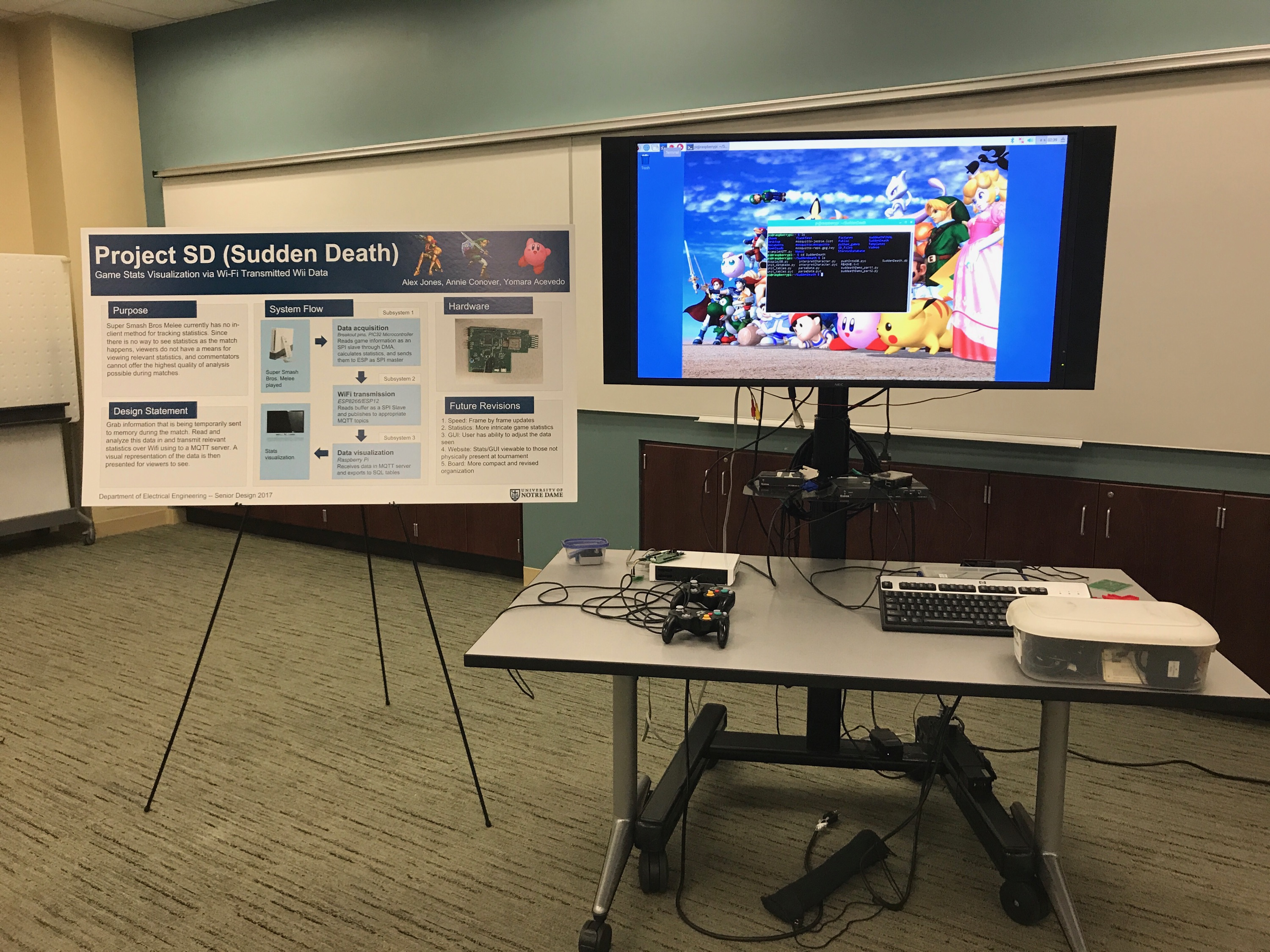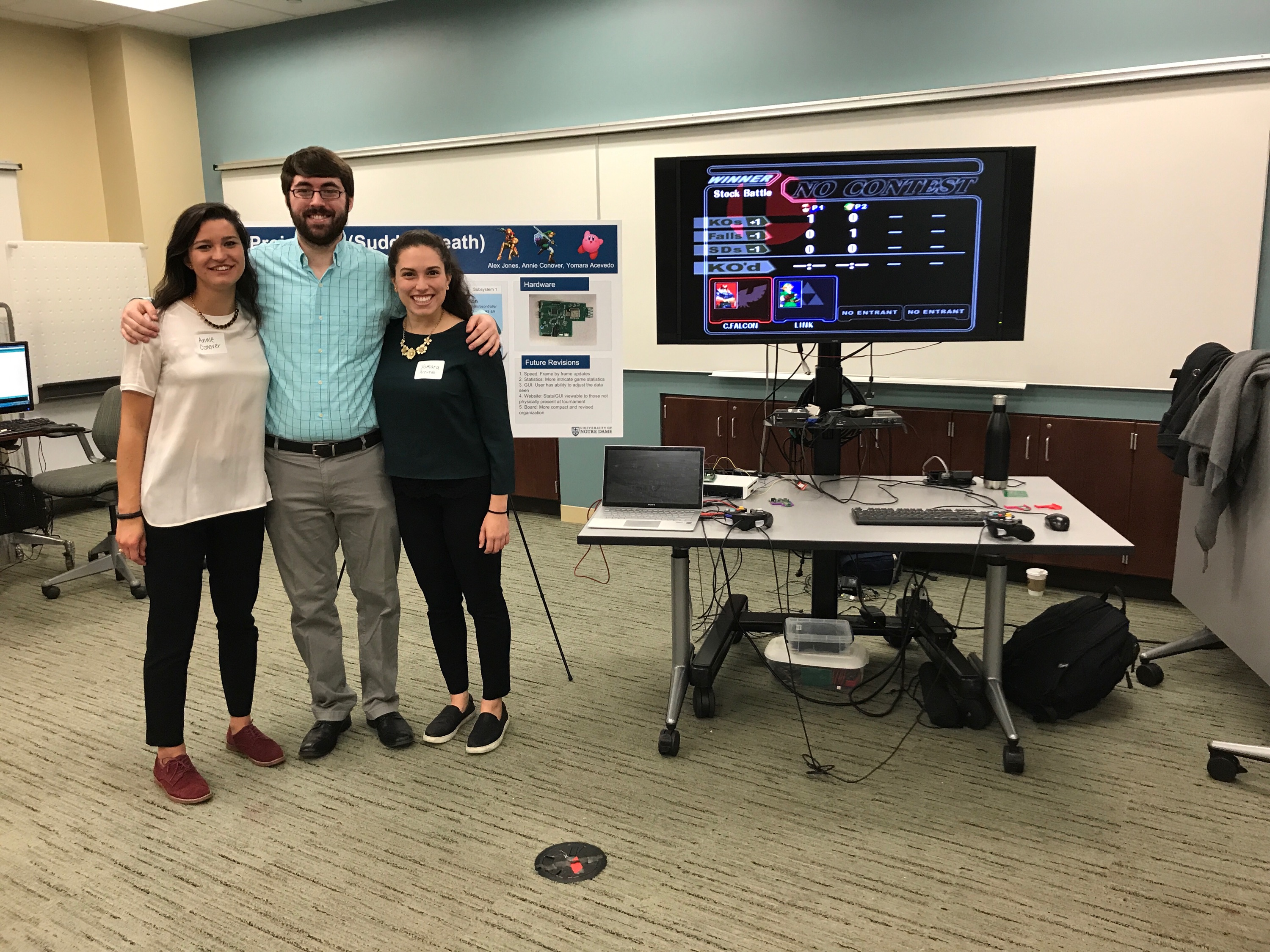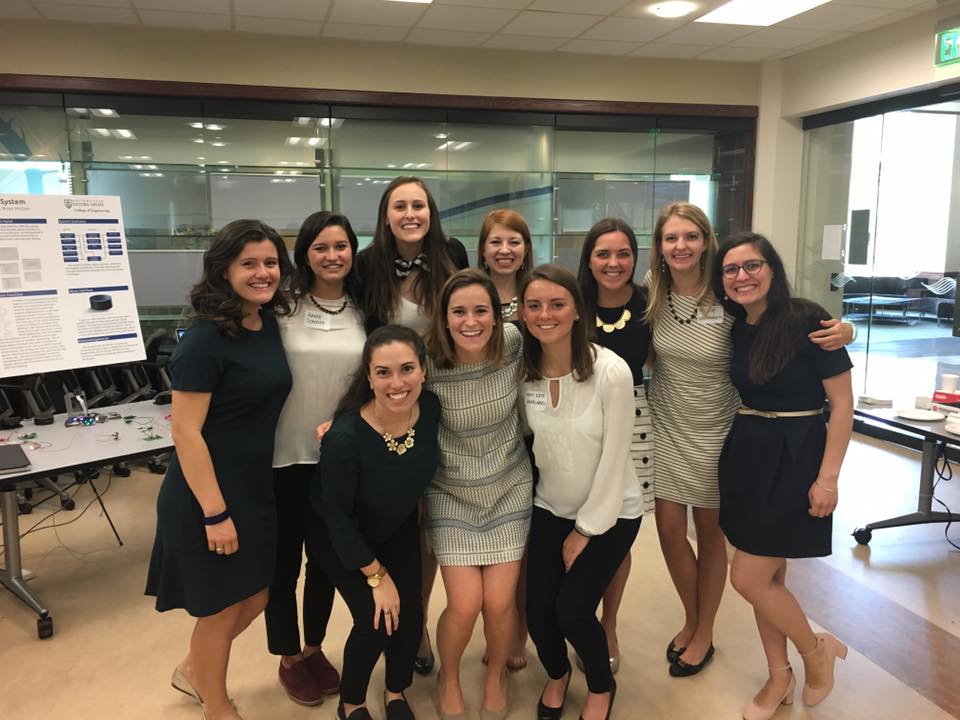
Gallery
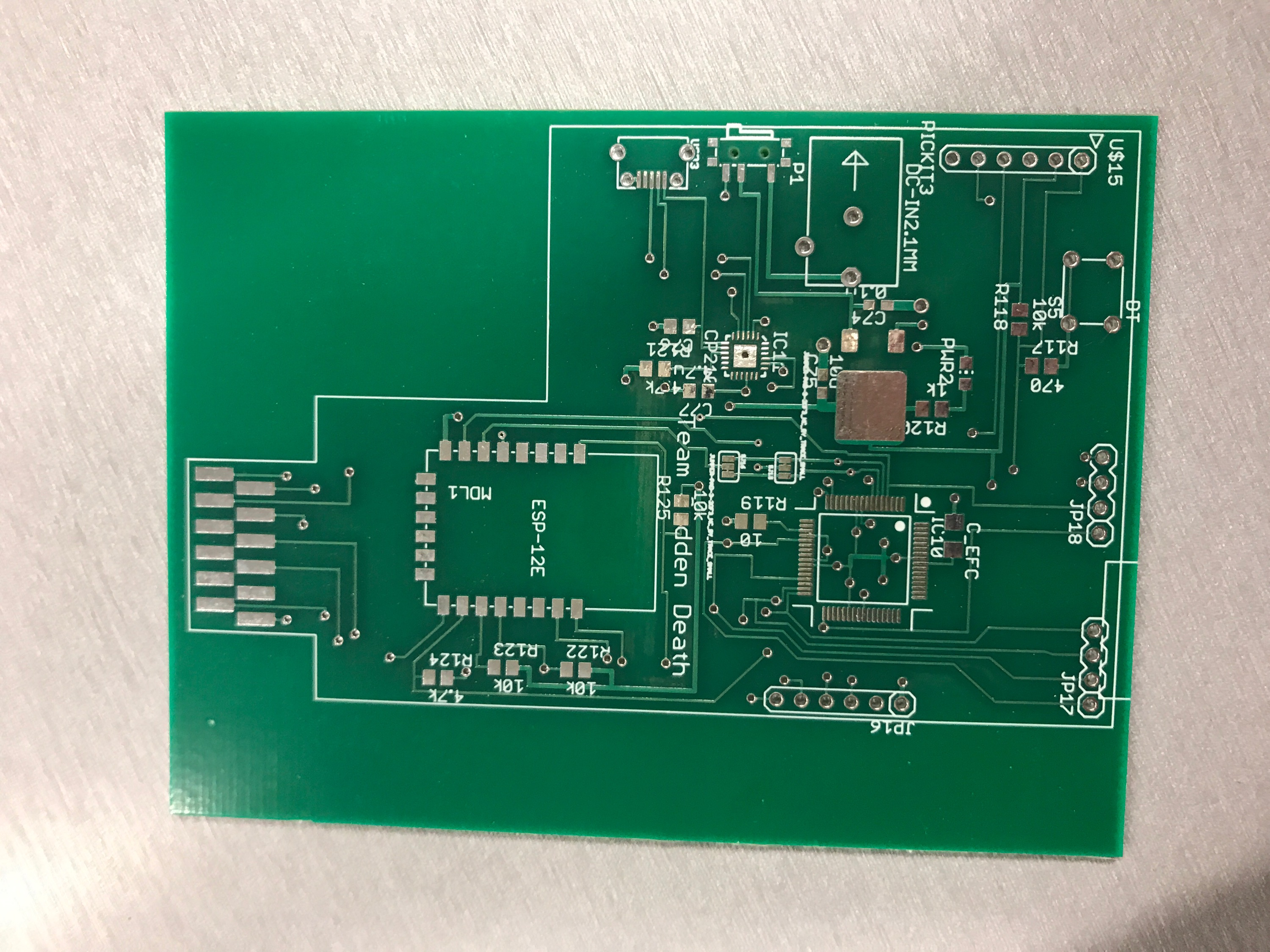
Uncut board
Our first and last design of the breadboard. In the future, we would probably design earlier in order to make revisions. Usually Professor Schafer will cut boards out for groups, but due to the irregular shape of our board, he required that we cut ours out ourselves.
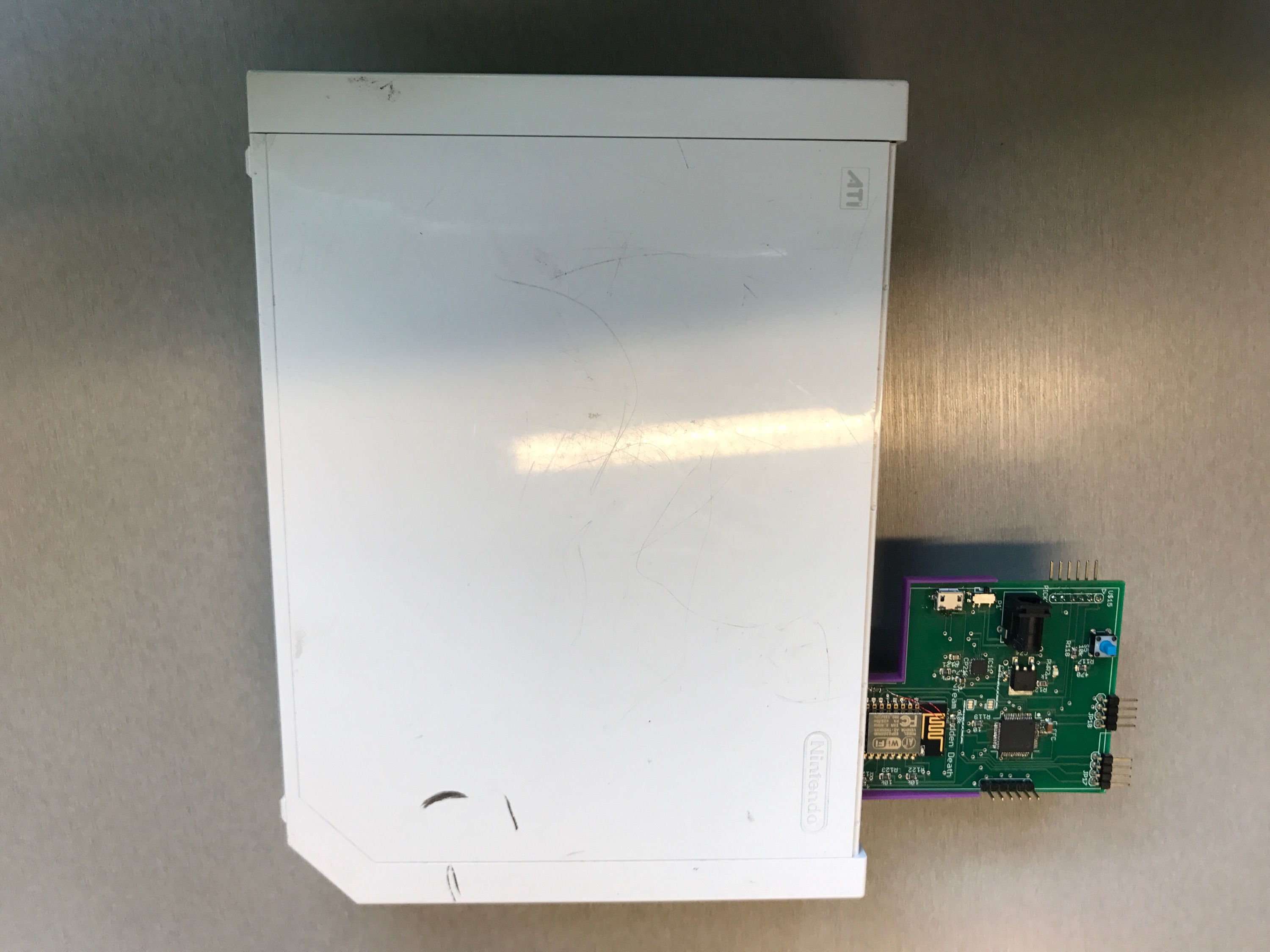
Ideal hardware set up
Unfortunately, our board was not fully functional in time for demo day. This is what that set up would have looked liked--note the lack of wirings and compact hardware.
